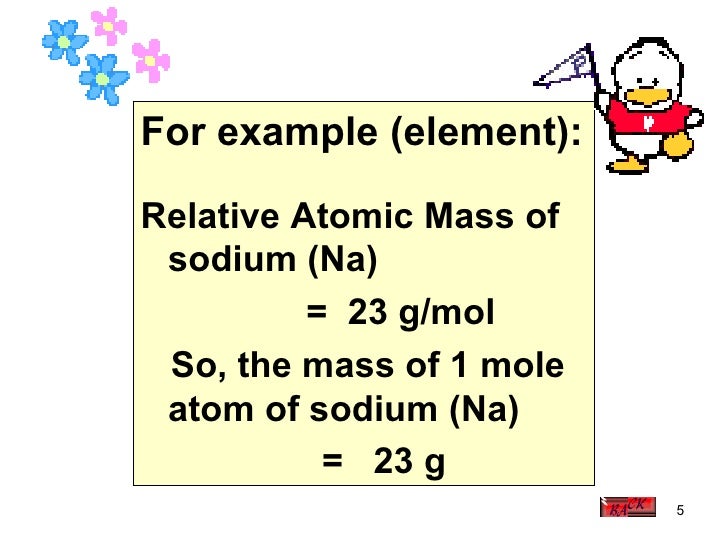Relative Atomic Mass Of Sodium
- Atomic Mass of Sodium Atomic mass of Sodium is 22.9897 u.
- The mass in grams of a mol of an element is equal to the atomic mass. In the case of sodium, its atomic mass is 22.99 u (this is the relative weighted average atomic mass for sodium in atomic mass units). The mass of 1 mol of sodium atoms is the atomic mass expressed in grams, or 22.99 g. Consider the balanced equation.
- Density is the mass of a substance that would fill 1 cm 3 at room temperature. Relative atomic mass The mass of an atom relative to that of carbon-12. This is approximately the sum of the number of protons and neutrons in the nucleus. Where more than one isotope exists, the value given is the abundance weighted average.
Award winning periodic table, by relative atomic mass, with user-friendly element data and facts. The word mole has been adopted to represent the Avagadro number of atoms of an element, that is, the relative atomic mass of an element. Thus, one mole of sodium weighs 23.0 g or one tenth of a mole of sodium weighs 2.3 g. View chapter Purchase book Application of Porous Metals.
Molar mass of NaF = 41.9881732 g/mol
This compound is also known as Sodium Fluoride.
Convert grams NaF to moles or moles NaF to grams
Molecular weight calculation:
22.98977 + 18.9984032
| Symbol | # of Atoms | Sodium | Na | 22.989770 | 1 | 54.753% | |
| Fluorine | F | 18.9984032 | 1 | 45.247% |
In chemistry, the formula weight is a quantity computed by multiplying the atomic weight (in atomic mass units) of each element in a chemical formula by the number of atoms of that element present in the formula, then adding all of these products together.
Finding molar mass starts with units of grams per mole (g/mol). When calculating molecular weight of a chemical compound, it tells us how many grams are in one mole of that substance. The formula weight is simply the weight in atomic mass units of all the atoms in a given formula.
If the formula used in calculating molar mass is the molecular formula, the formula weight computed is the molecular weight. The percentage by weight of any atom or group of atoms in a compound can be computed by dividing the total weight of the atom (or group of atoms) in the formula by the formula weight and multiplying by 100.
Using the chemical formula of the compound and the periodic table of elements, we can add up the atomic weights and calculate molecular weight of the substance.
A common request on this site is to convert grams to moles. To complete this calculation, you have to know what substance you are trying to convert. The reason is that the molar mass of the substance affects the conversion. This site explains how to find molar mass.
What Determines Atomic Mass

Formula weights are especially useful in determining the relative weights of reagents and products in a chemical reaction. These relative weights computed from the chemical equation are sometimes called equation weights.
The atomic weights used on this site come from NIST, the National Institute of Standards and Technology. We use the most common isotopes. This is how to calculate molar mass (average molecular weight), which is based on isotropically weighted averages. This is not the same as molecular mass, which is the mass of a single molecule of well-defined isotopes. For bulk stoichiometric calculations, we are usually determining molar mass, which may also be called standard atomic weight or average atomic mass.
Relative Atomic Mass Meaning
How do you calculate relative formula mass?
1 Answer
Explanation:
Relative formula mass,
Example: What is the relative formula mass for sodium sulfate,
Relative Atomic Mass Of Sodium Sulphate
When working with moles, the relative atomic and formula masses are numerically equal the molar mass. Molar mass is the mass in grams of one mole of a substance. So the mass of one mole of sodium,
Related questions
